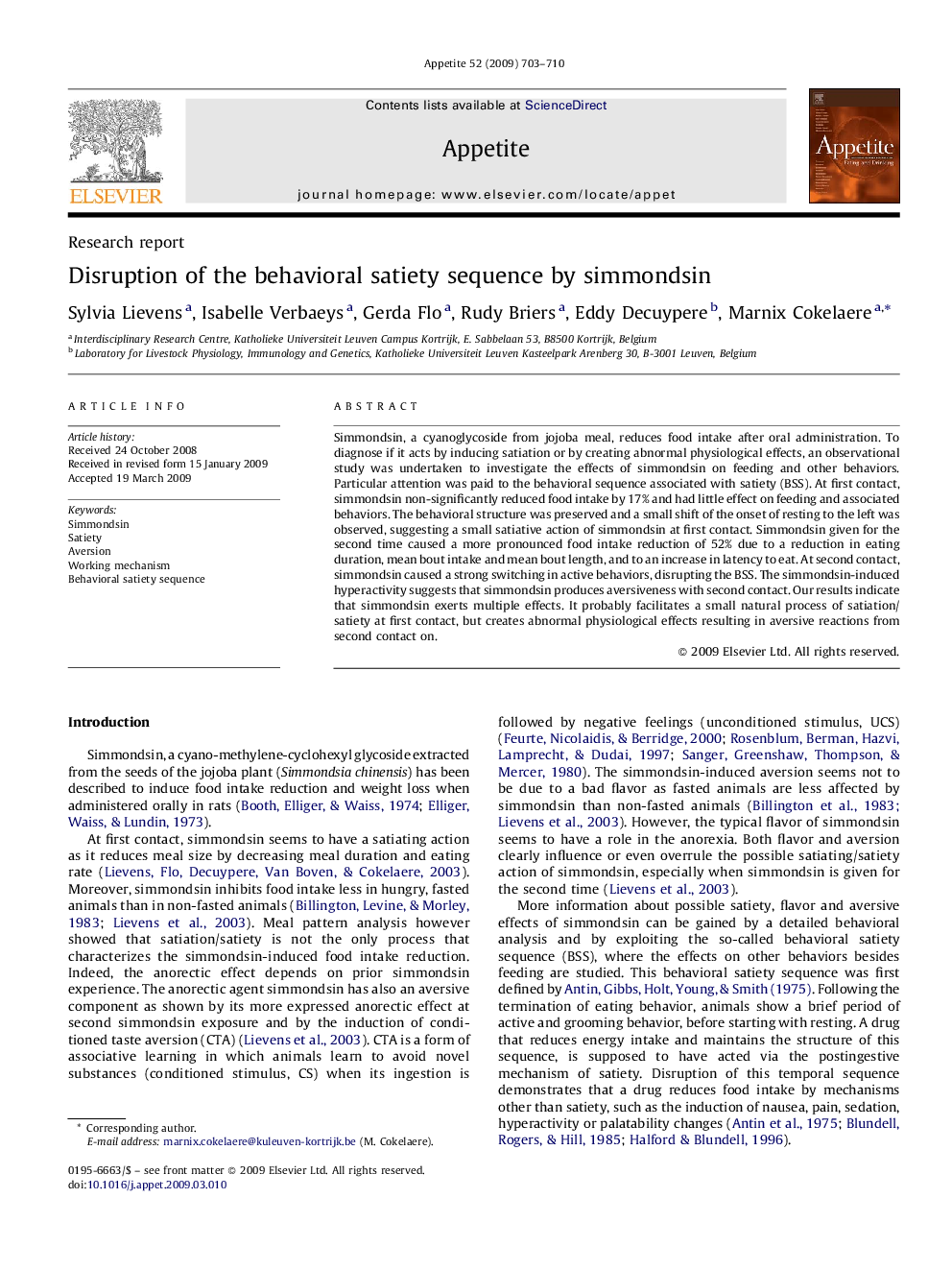| Article ID | Journal | Published Year | Pages | File Type |
|---|---|---|---|---|
| 941026 | Appetite | 2009 | 8 Pages |
Simmondsin, a cyanoglycoside from jojoba meal, reduces food intake after oral administration. To diagnose if it acts by inducing satiation or by creating abnormal physiological effects, an observational study was undertaken to investigate the effects of simmondsin on feeding and other behaviors. Particular attention was paid to the behavioral sequence associated with satiety (BSS). At first contact, simmondsin non-significantly reduced food intake by 17% and had little effect on feeding and associated behaviors. The behavioral structure was preserved and a small shift of the onset of resting to the left was observed, suggesting a small satiative action of simmondsin at first contact. Simmondsin given for the second time caused a more pronounced food intake reduction of 52% due to a reduction in eating duration, mean bout intake and mean bout length, and to an increase in latency to eat. At second contact, simmondsin caused a strong switching in active behaviors, disrupting the BSS. The simmondsin-induced hyperactivity suggests that simmondsin produces aversiveness with second contact. Our results indicate that simmondsin exerts multiple effects. It probably facilitates a small natural process of satiation/satiety at first contact, but creates abnormal physiological effects resulting in aversive reactions from second contact on.
